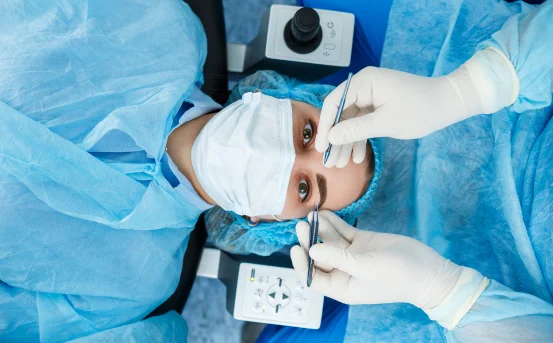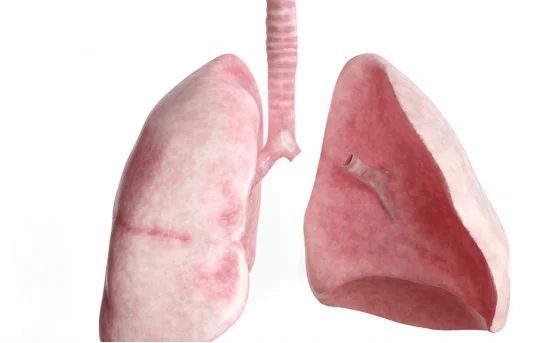Cataract surgery is one of the most commonly performed and successful surgical procedures in the world. It is used to treat cataracts—a condition where the eye’s natural lens becomes cloudy, leading to blurred vision, sensitivity to light, poor night vision, and eventually, significant visual impairment. The surgery involves removing the clouded lens and replacing it with an artificial intraocular lens (IOL) to restore clear vision.
Thanks to advances in medical technology, cataract surgery has evolved significantly over the years. Today, there are several types of cataract surgery, each using different methods to remove the affected lens and insert the artificial one. The choice of technique depends on factors like the patient’s eye health, the surgeon’s expertise, the nature of the cataract, and the availability of surgical equipment.
Understanding the Type of Cataract Surgery
Before we delve into the different types of cataract surgery, it’s important to understand what the procedure entails. The main goal of cataract surgery is to remove the clouded natural lens of the eye retina and replace it with a clear artificial intraocular lens. The surgery is usually done under local anesthesia, and patients typically go home the same day. Recovery is quick, and most people experience a significant improvement in their vision within a few days.
Now, let’s look at the main types of cataract surgery used in modern ophthalmology.
Phacoemulsification (Phaco)
Phacoemulsification is the most commonly used method for cataract surgery worldwide. It is considered the gold standard for treating age-related cataracts and is widely regarded for its safety, effectiveness, and fast recovery time.
In this procedure, the surgeon makes a tiny incision—usually less than 3 mm—on the cornea. A special ultrasonic probe is inserted through this incision. The probe emits high-frequency sound waves that break the cloudy lens into tiny pieces. These fragments are then gently suctioned out of the eye.
Once the lens is removed, a foldable intraocular lens (IOL) is inserted through the same incision and positioned in the lens capsule (the natural pocket that holds the lens). Because the incision is small, stitches are rarely needed, and the healing process is relatively fast.
Phacoemulsification is ideal for most patients with typical, age-related cataracts and can be combined with premium lens implants, including multifocal and toric lenses, to address presbyopia or astigmatism.
Femtosecond Laser-Assisted Cataract Surgery (FLACS)
Femtosecond laser-assisted cataract surgery is a more advanced and precise form of cataract surgery. This technique uses a computer-guided femtosecond laser to perform several critical steps of the procedure that would otherwise be done manually with surgical instruments.
The laser is used to:
- Create corneal incisions
- Perform capsulotomy (opening of the lens capsule)
- Soften and break the cataract into smaller pieces
After the laser phase is complete, the remaining steps—removing the lens fragments and implanting the IOL—are performed similarly to traditional phacoemulsification.
FLACS allows for greater precision and may reduce the amount of ultrasound energy needed during the procedure. It is particularly beneficial in cases where patients have complex cataracts, dense lenses, or certain corneal conditions.
However, FLACS is not always covered by insurance and may involve additional out-of-pocket costs for patients. Not all cataract surgery centers are equipped with femtosecond laser technology, so availability may be limited.
Manual Small-Incision Cataract Surgery (MSICS)
Manual small-incision cataract surgery is commonly performed in areas where access to advanced technology like phacoemulsification may be limited. It is also preferred in certain clinical situations where phacoemulsification may be less effective, such as in patients with very hard or mature cataracts.
In MSICS, a slightly larger incision (6–7 mm) is made in the sclera (white part of the eye) or the cornea. The cataract is removed in one piece through this incision without the use of ultrasound. An intraocular lens is then inserted, and the wound is either self-sealing or may require minimal suturing.
MSICS is cost-effective, doesn’t require high-end equipment, and has excellent outcomes, especially in resource-limited settings. While recovery time may be slightly longer than with phacoemulsification, the procedure remains safe and effective.
Extracapsular Cataract Extraction (ECCE)
Extracapsular cataract extraction is an older surgical technique that is now used mainly in special situations. It involves a large incision (usually around 10 mm) through which the cataractous lens is removed in one piece. The back portion of the lens capsule is left in place to support the intraocular lens implant.
ECCE may be recommended when the cataract is very advanced and dense, making it difficult to break apart using phacoemulsification. In such cases, the surgeon manually extracts the lens and inserts a rigid IOL.
Because the incision is larger, ECCE typically requires stitches, and the healing period is longer than with more modern techniques. There is also a slightly higher risk of infection or inflammation. However, it remains a reliable option for patients with complicated cataracts or limited access to phacoemulsification technology.
Intracapsular Cataract Extraction (ICCE)
Intracapsular cataract extraction is a largely outdated technique that involves removing the entire lens and its capsule from the eye. A large incision is required, and the IOL is implanted in a different part of the eye (usually the anterior chamber) because the natural capsule that typically holds the IOL is also removed.
Due to the risk of complications and longer recovery time, ICCE has been almost entirely replaced by safer and more modern methods. It is now rarely used and only in extreme cases where other surgical approaches are not viable.
How to Choose the Right Type of Cataract Surgery
Choosing the most suitable type of cataract surgery depends on various factors:
- The density and type of cataract
- The health of the cornea and retina
- The presence of other eye conditions like glaucoma or macular degeneration
- The patient’s overall health and medical history
- Availability of surgical technology
- Patient’s visual goals (e.g., desire to reduce glasses use)
A detailed preoperative consultation and eye examination will help your ophthalmologist determine the most appropriate surgical technique and intraocular lens for your needs.
Conclusion
Cataract surgery has come a long way, offering multiple options tailored to the needs of individual patients. Whether it’s the widely used phacoemulsification, the precision of femtosecond laser-assisted surgery, or the practical utility of small-incision or manual techniques, today’s surgical choices allow for safe, effective, and customizable care.
Understanding the types of cataract surgery can help patients ask the right questions, weigh the pros and cons, and feel confident in their treatment plan. With the right approach, cataract surgery can restore not just vision, but also quality of life.
If you or a loved one are facing cataract surgery, consult a skilled ophthalmologist to explore your options and develop a surgical plan that best meets your visual and lifestyle needs.























